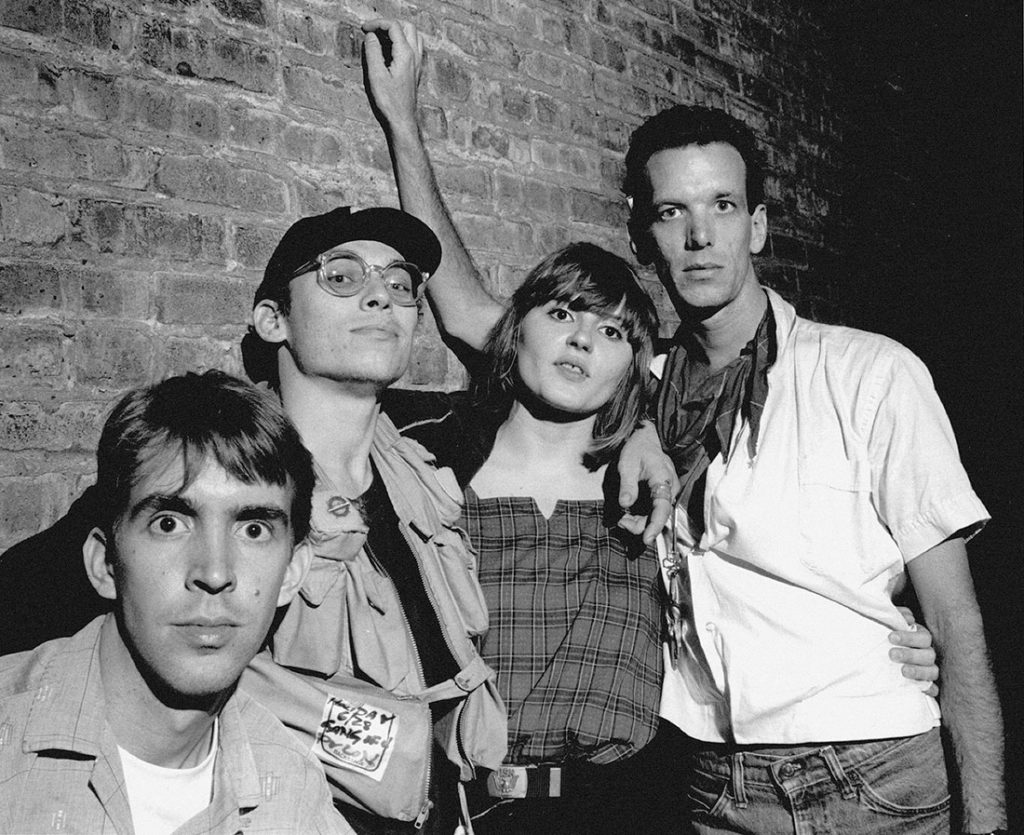Though the emergence of alternative music in Athens easily traces back to the early 1980s, the Big Bang theory of how exactly the scene coalesced is often left enshrouded in mystery. This history has been deeply explored in recent years by Art Rocks Athens, which has illustrated that the rise of original music was largely rooted in the strong foundation of aspiring visual artists who had gravitated to town to attend UGA’s art school. Formed in 1979 by four art students—guitarist Randy Bewley, drummer Curtis Crowe, vocalist Vanessa Briscoe Hay and bassist Michael Lachowski—Pylon was at the epicenter of this movement.
Artists at heart, Pylon began creating music as an extension of performance art, guided by a punk ethos that eschewed any necessity for formal training or authority. The resulting conglomeration of new-wave, post-punk, jangle-pop and art-rock influences has retained the curiosity of listeners throughout the past four decades. Arriving on Nov. 6 courtesy of New West Records, a new four-album Pylon Box reexamines the band’s legacy.

“We’ve been reviewing the period of the band’s formation with this box project and have answered questions about what we were doing or thinking in those early stages,” says Lachowski. “I think I’ve arrived at the word that Vanessa might have said during this, that we developed our own musical language. That’s a bit different than the usual answer that we were untrained musicians, because I think we managed to construct something that goes beyond musical naiveté. I think we brought our visual art sensibilities and constructs to how to work with instruments, making sound, constructing and then performing songs. What we ended up with could only have been made by those four people, with their limitations and ideas, un-interchangable, and ultimately all its own.”
The comprehensive box set includes remastered versions of the studio albums Gyrate (1980) and Chomp (1983)—reissued on vinyl for the first time in nearly 35 years—as well as the band’s first-ever recording, Razz Tape, a previously unreleased 13-track session with Chris Razz of Secret Sounds and Low Yo Yo Stuff Records. The fourth LP is called Extra, a self-describing round-up of live recordings, unreleased tracks and the “Cool” b/w “Dub” debut single that started it all.

Autographed by surviving members Crowe, Hay and Lachowski, the box set is accompanied by a 200-page hardbound, full-color book that tenderly depicts the band in its youth through portraits, artwork, memorabilia and a detailed essay by music journalist Stephen Deusner. Digging through personal archives to provide material for the book naturally lent itself to building an exhibition that documents the visual aesthetic surrounding the band. Many of the book’s items can be viewed in person through “Pylon: Tourists In Rock and Roll,” a showcase of photographs, show posters, performance costumes and other ephemera currently on view at the UGA Special Collections Building through May.
There’s even a special edition dark roast coffee called “Pylon Buzz Blend,” a clever nod to the Chomp track “Buzz,” that Jittery Joe’s Coffee Roasting Company will release to go along with all of this.
“I think Pylon has continued to interest people because we never really sounded like or did things like anyone else,” reflects Hay. “I think people sense we were and are authentic and true to ourselves. But we would have been bound for the dustbin of glory except for the fact that we had major cheerleaders over the years.” Crediting the support of trailblazing friends-on-the-rise R.E.M. and the B-52’s, along with being preserved in time through the 1987 music documentary Athens, GA: Inside/Out, Hay acknowledges the importance of fans, labels, publications and other industry professionals over the years.
The members of Pylon resemble human embodiments of art—as a performance, as a form, as a work in progress. Bewley, who died in 2009 at 53—an event that marked the true, final end of Pylon, as the band could not possibly fathom playing without him—worked as an art teacher for many years and devoted the final chapter of his life to a focus on creating his own artwork and music.
Today, Crowe works in the Atlanta film industry, where his drawing background regularly surfaces in the form of mechanical and architectural renderings. “Art is just communication,” he says. “It’s just another way of expressing a complex idea.”
In addition to carrying on the spirit of Pylon through the Pylon Reenactment Society, which had been performing and working on new material up until the pandemic, Hay incorporates writing or painting into her routine on a near-daily basis. “I have to have some creative outlet,” she says. “It’s how I am wired.”
Lachowski, whose day job has been at the Georgia Museum of Art for nearly two decades, has over the years produced his own work, actively bouncing between drawings and photography. “Art was at the core of Pylon, just as it is with me.”
This pureness of play and dedication to authenticity was always at the center of Pylon’s heart, so when seeking that joy became increasingly more complicated by the intricacies of touring, business negotiations and public approval, the band agreed it was time to quit. Only four years into a promising career, this announcement felt abrupt, but Crowe attributes part of the band’s continued legacy to its decision to call it off when it did—to end on a high note, and no one can ever know of you any other way. “We quit whenever it stopped being fun, so what is left is a pure expression,” he says. “We were never really too good at quitting, though. It was always too much fun.”
Like what you just read? Support Flagpole by making a donation today. Every dollar you give helps fund our ongoing mission to provide Athens with quality, independent journalism.









